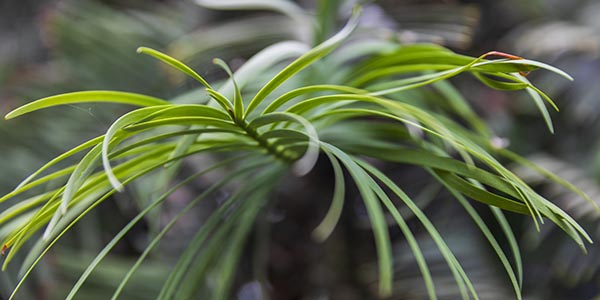Greenhouse works to preserve biodiversity
Sixty-eight plants in the greenhouse are threatened species

The E.W. Heier Teaching Greenhouse is home to a diverse array of plant life, and for some of these species, the greenhouse is one of the few places you can find them on Earth.
“We’re losing genetic diversity because we’re losing habitats in the wild,” said Laurie Williams, greenhouse manager. “Our species held in cultivation tend to come from a narrow genetic base. Thus, we do not want to lose the diversity of the population in the wild.”
Sixty-eight plants in the greenhouse are red-listed as threatened species by the International Union for Conservation of Nature, which maintains the world’s most comprehensive inventory of the global conservation of plant and animal species. So, to diversify species’ genetic composition, the greenhouse shares pollen from these plants with other institutions.
Williams recently collaborated with Cornell University to exchange pollen and increase the genetic diversity of one such species — the Wollemia nobilis. The species, originally from a protected valley in Australia, is now critically endangered due to the Australian wildfires at the beginning of the year.
Having endangered plants in laboratories and greenhouses such as at Binghamton opens the door for future procreation, Williams said.
“Visitors and students can value the diversity of plants around the world by becoming aware of them in cultivation,” Williams said. “Hopefully, they will become more cognizant of the need to preserve green life in the wild.”
Palmer Ernst, a junior double majoring in biochemistry and neuroscience, said that being surrounded by these plants is a privilege.
“It also makes me think a lot about environmentalism,” Ernst said. “I think we should be focusing on conservation so that more people can see and be around these plants.”
The greenhouse also offers Ernst a warm space to relax year-round — especially during the cold months.
“I like seeing the plants, the fish and the water,” Ernst added. “Especially when it’s cold and everything else seems so dead outside [during the winter]. I go to the greenhouse because it’s just a very peaceful place to be for a little bit before I have to go back to being a real person again.”
William Stein, emeritus professor of biological sciences at Binghamton University, believes that visiting the greenhouse gives people a break from the quick-paced nature of our modern world.
“The fact that plants are living beings that we share the Earth’s surface with is an important lesson that needs to be taught,” Stein said. “They are wonderful in their own right, and we have a very great responsibility to preserve the precious things we have for the future.”
Though the greenhouse is only a slice of nature, it connects people with the greater world.
“After Binghamton, some students won’t have the opportunity to get up close and touch them and see what these plants are like,” Williams said. “See what it is like to have a little slice of a biome, and it introduces people to the world at large.”
